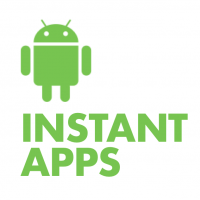How Mobile Developers Can Take Advantage of Android Instant Apps

Android’s first Instant Apps have been released, and any developer can now develop Instant Apps—or adapt their existing apps to support this feature.
Instant Apps offer users a way to easily engage with software without the need to download the app. Even though they’re not installed on your mobile device, the app functions like a native app, but with the speed of a speed and ease of loading a webpage.
This function is meant to alleviate storage woes in the sense that, like web apps, they are available until you close them. Once a user is done browsing the app, the feature removes it from view. This makes the app easily accessible without adding to the clutter of folders and app drawers.
For developers, Instant Apps are a tool to streamline the way users interact with their content, store, or game. And any developer looking to implement Instant Apps may find it a lot easier than expected—the Google Playstore and Android OS have seen the conversions going smoothly so far.
An existing native Android app can be converted into an Instant App by turning the source code into a number of modules. According to Google, it typically takes developers about four to five weeks to adapt their existing apps to become Instant Apps.
When the source code is modularized, Google can pretty much tap into it on the fly. Say, for instance, that the app being run is set up to have each individual page showcase as a standalone module. This allows for any search that links to that specific page to be downloaded and served up instantly by way of Google tapping into that specific module of code.
This process will give developers two versions of the app to work with: the installable APK and this newer version identified by Google as an Instant App. Adding an "install" call-to-action button allows users to download the full native app without having to leave the current page.
So, what are the advantages of turning an entire app into a series of instant modules, or releasing only a few modules to drive downloads for the entire app?
Nearly instant gratification is the name of the game. Therefore, what developers are left with is the ability to offer users all the advantages of using a native app without the need to install anything. In a sense, all it is doing is taking source code that has already been written and allowing for single-click accessibility via URL. Think of it as subsets of an app infused with an on-demand mentality.
Reducing the number of clicks that it takes to access the information an app has to offer is the whole point of creating a frictionless install, and while the simple solution may not seem glamorous by any means, it is indeed catching on.
Considering the ease of use and low barrier to entry—and the fact that Instant Apps are now available on more than 500 million devices globally—Android developers probably will continue to take advantage of this app opportunity.

